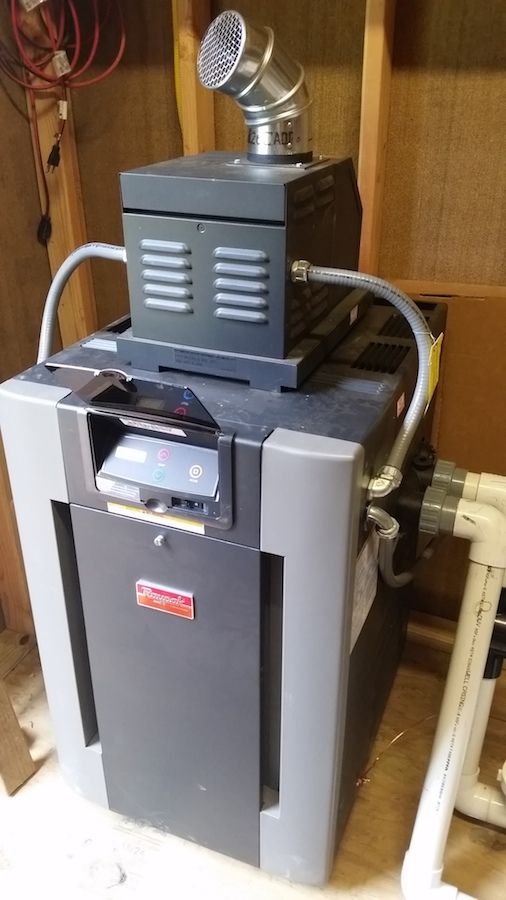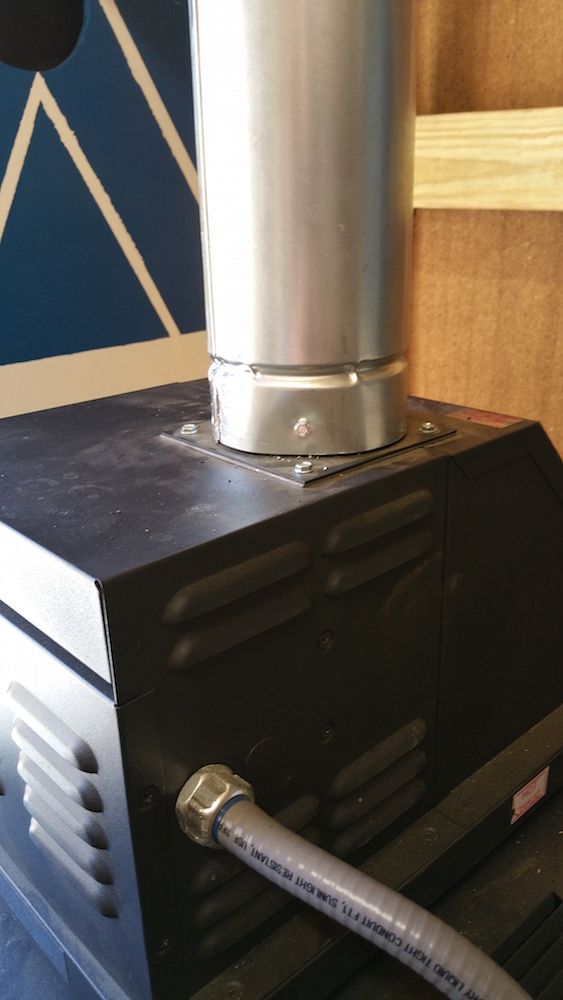Hey all, I have a Raypak Heater 266 (natural gas) on my new (saltwater) pool build. I have the heater located in my pool shed, along with the plumbing. Since the heater is located in a shed, the pool installer said I needed the vent blower kit and need to vent it out the roof of the shed. He said I need to hire someone to do it, or, DIY if I know what I'm doing. From what I understand, the 4" output needs to be positioned inside another duct, as a heat shield.
I hooked up the electric myself and paid a plumber to hook up the gas line. It works great and raises the temp about 2.3 degrees per hour. I have a couple questions:
1. Do gas heaters work more efficiently at a low flow rate or a higher flow rate? My Chlorine generator catches the water temp as it's leaving the heater and the temp of the water leaving the heater (on the lowest flow setting) is about 10 degrees warmer. On a higher flow rate the temp shows about 6 degrees warmer, but of course the water is moving faster. So I'm thinking the higher flow rate is more efficient?
2. The 4" pipe gets so hot you can't touch it. The air blowing out of the vent is hot like a hair dryer (or hotter). It pains me to see this hot air going to waste, when it could also be heating my water. I realize the air has carbon monoxide so I need to be careful. So my question is, has anyone invented any kind of mechanism to re-capture this heat and use it again? For example, maybe a box on the roof of the shed with copper coiled pipe? Hmmm I donno.

I hooked up the electric myself and paid a plumber to hook up the gas line. It works great and raises the temp about 2.3 degrees per hour. I have a couple questions:
1. Do gas heaters work more efficiently at a low flow rate or a higher flow rate? My Chlorine generator catches the water temp as it's leaving the heater and the temp of the water leaving the heater (on the lowest flow setting) is about 10 degrees warmer. On a higher flow rate the temp shows about 6 degrees warmer, but of course the water is moving faster. So I'm thinking the higher flow rate is more efficient?
2. The 4" pipe gets so hot you can't touch it. The air blowing out of the vent is hot like a hair dryer (or hotter). It pains me to see this hot air going to waste, when it could also be heating my water. I realize the air has carbon monoxide so I need to be careful. So my question is, has anyone invented any kind of mechanism to re-capture this heat and use it again? For example, maybe a box on the roof of the shed with copper coiled pipe? Hmmm I donno.





